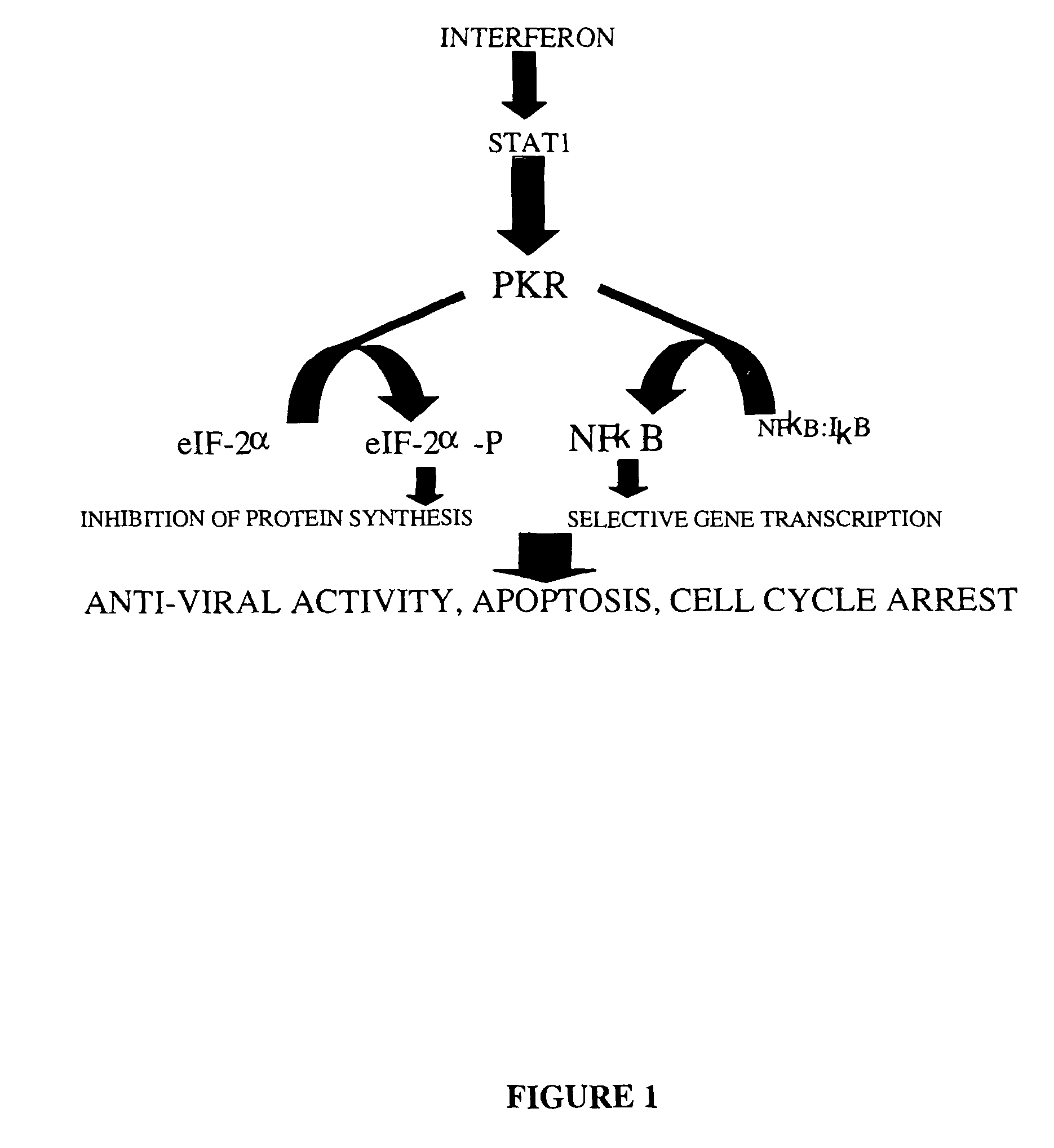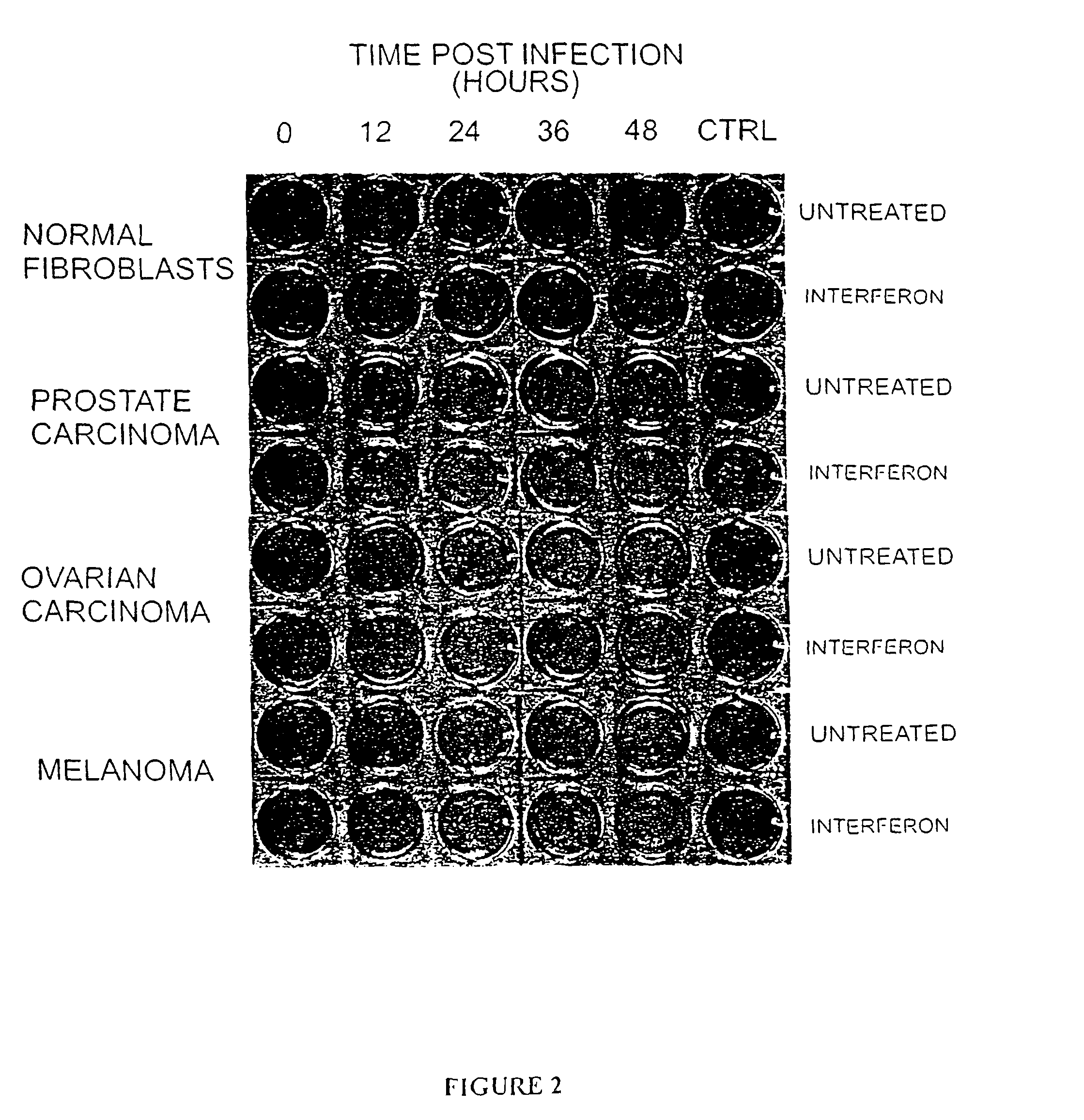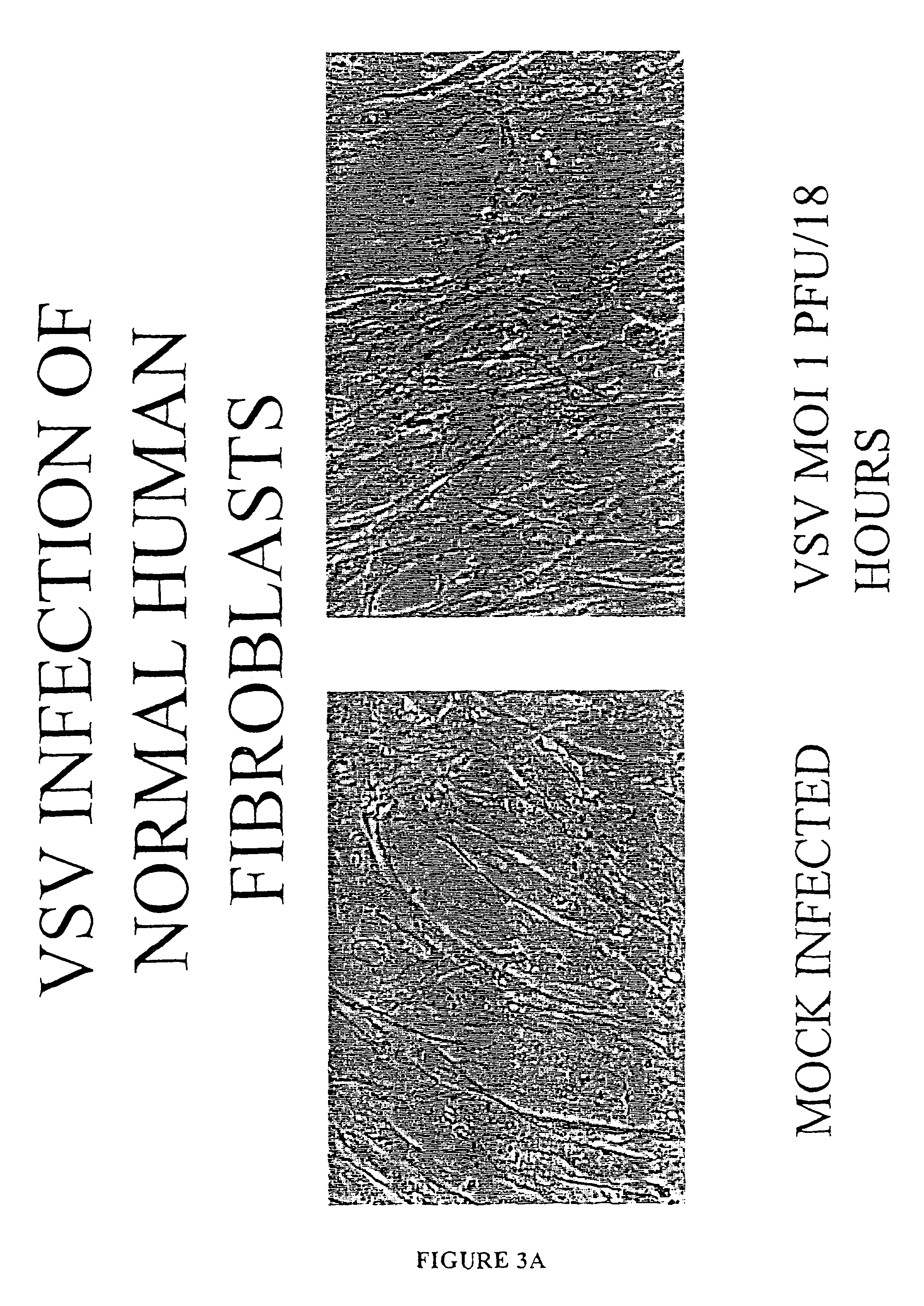Oncolytic virus
a technology of oncolytic virus and oncolytic peptide, which is applied in the field of oncolytic virus, can solve the problems of limited use of oncolytic virus common human pathogens, and the possibility of tumor regrowth
- Summary
- Abstract
- Description
- Claims
- Application Information
AI Technical Summary
Benefits of technology
Problems solved by technology
Method used
Image
Examples
example 1
PKR Negative Cells are Susceptible to VSV Infection
In Vivo Experiments
[0111]Initial studies were directed to identifying viruses that are capable of infecting PKR− / − animals and cells. Using homologous recombination strategies, PKR null mouse strains were generated (35, which is incorporated by reference) and tested for their ability to fight virus infections. Since these mice are PKR− / −, they should be susceptible to virus infection. Several species of virus were administered to PKR null animals over a range of concentrations.
Infection of PKR Null Mice:
[0112]A PKR null mouse line was generated using conventional knockout technology (Abraham, N., et al., J Biol Chem, 1999. 274:5953-5962). Groups of five female mice, 3 months of age or greater, were infected intranasally with varying amounts of vesicular stomatitis virus (Indiana strain). Age matched wild type animals were infected in parallel and both sets of animals were monitored on a daily basis for signs of infection. These incl...
example 2
Selective Killing of Tumour Cells with VSV
In Vitro Experiments
[0115]Several tumour cell lines were chosen at random from the Ottawa Regional Cancer Center and tested for their susceptibility to VSV infection. Primary fibroblast cultures from healthy adult volunteers or primary bone marrow samples from healthy donors were used as control cells.
Infection of Tumour Cells with VSV:
[0116]As a first test of the oncolytic properties of VSV, virus production and cytopathic effect following an overnight incubation with VSV was assessed. Monolayers of cells were incubated with the Indiana strain of VSV at a multiplicity of infection (moi) of 0.1 plaque forming units (pfu). After allowing virus to adsorb for minutes at 37 C, the cultures were rinsed thoroughly with phosphate buffered saline (PBS) and then cultured an additional 18 hours at 37 C. At this time, the cultures were examined microscopically for cytopathic effect (cpe) and photographed. The 18 hour supernatant was removed and virus t...
example 3
Killing of Tumour Cells in Mixed Cultures
[0125]Normal human fibroblasts and 293T tumour cells were co-cultured in a 50:50 mixture. Since 293T cells express the large T antigen which is not found in normal cells, the two cell types can be distinguished by immunofluoresence.
[0126]In this experiment cultures were infected at an moi of 0.1 pfu / cell and the infection allowed to proceed in the presence or absence of interferon. At 0, 18 and 24 hours (FIG. 4) the cultures were fixed and stained with antibodies to large T antigen (red nuclei) to detect the 293T cells and with DAPI (blue nuclei) which stains all cell types (FIG. 4). Initially both cell types displayed a spindle-like morphology with large oval nuclei. After 18 hours the number of 293T cells (red nuclei) were reduced and many of the remaining 293T cells displayed altered nuclear morphology. By 24 hours post-infection very few 293T cells were detected and those few that remained displayed severely condensed or fragmented nuclei...
PUM
| Property | Measurement | Unit |
|---|---|---|
| time | aaaaa | aaaaa |
| volume | aaaaa | aaaaa |
| time | aaaaa | aaaaa |
Abstract
Description
Claims
Application Information
 Login to View More
Login to View More - R&D
- Intellectual Property
- Life Sciences
- Materials
- Tech Scout
- Unparalleled Data Quality
- Higher Quality Content
- 60% Fewer Hallucinations
Browse by: Latest US Patents, China's latest patents, Technical Efficacy Thesaurus, Application Domain, Technology Topic, Popular Technical Reports.
© 2025 PatSnap. All rights reserved.Legal|Privacy policy|Modern Slavery Act Transparency Statement|Sitemap|About US| Contact US: help@patsnap.com



